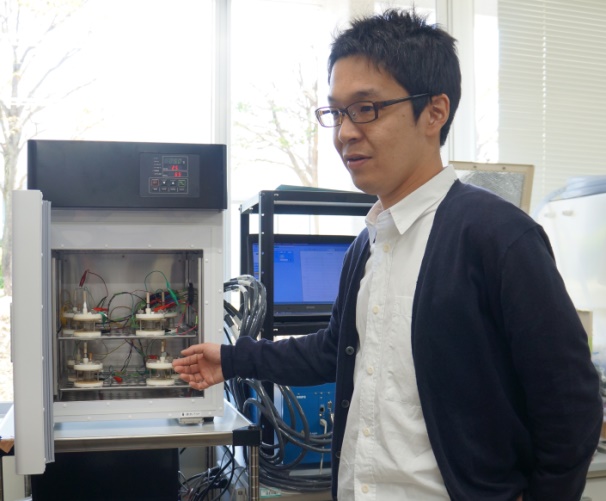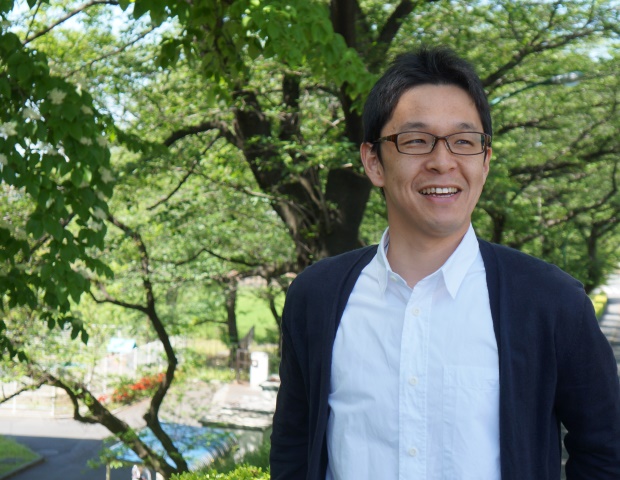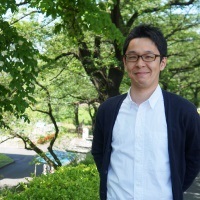Jun. 23, 2017
New energy ideas from the sea’s dark depths
Ryuhei Nakamura, Team Leader
Please describe your role at RIKEN.
I lead a group investigating how nature organizes robust and efficient energy cycles. We hope that understanding unique systems, such as those found in the dark depths of the oceans, will inspire advances in sustainable energy production.
How did you become interested in your current field of research?
I’m a physical chemist and have always been inspired by the elegance of photosynthesis. As a result, I’ve been researching this chemical reaction from the vantage of physical chemistry for the last 15 years. However, I came into contact with one of my other current areas of interest eight years ago, after talking to a microbiologist working on deep-sea hydrothermal fields. In these fields, life is nurtured in water heated by contact with the Earth’s crust through fissures in the sea bed. I was surprised to learn that deep-sea microbes and animals organize very robust and efficient ecosystems in these fields without using any solar energy. In fact, deep-sea ecosystems have been around far longer than ecosystems sustained by photosynthesis. In parallel with researching the solar-powered ecosphere, my team is now trying to replicate deep-sea life’s unique energy-harvesting systems, which we hope will prove useful models for new technologies—just as photosynthesis was a key to solar energy.

What excites you the most about your current research?
While microbiologists and geologists are aware of solar-independent ecosystems, few physical chemists or material scientists think much about them. Deep-sea ecosystems show that not only solar energy, but also geothermal and chemical energy can sustain life. Photosynthesis has always served as a blueprint for solar energy use, and I believe that the deep-sea ecosystems will tell us about how to utilize thermal and chemical energy in similar ways.
What do you think has been the most interesting discovery in your field in the last few years? How has it influenced your research?
More than a billion years ago, bacteria developed the mechanisms to harness electricity. These became inspirations for developments in modern technologies such as fuel cells, sensors, thermoelectric devices and voltage multipliers. The mechanisms in deep minerals that interconvert chemical, thermal and electric energy could also open up new technological possibilities. We are trying to understand how life utilizes abundant resources such as water, carbon dioxide and earth-crust minerals to synthesize chemical fuels. This knowledge could be used to design more environmentally friendly technology, such as by applying the voltage multiplying mechanism found in the deep-sea ecosphere to reduce atmospheric carbon dioxide. Moreover, a better understanding of how to keep the environment in ‘biological redox homeostasis’—where the energy needed by living things is created through processes that maintain a balanced and stable ecosystem—will contribute to conservation efforts and environmental rehabilitation.

Tell us about your professional and personal goals.
My goal as a scientist is to reveal the elegance and beauty in biological and geological processes to help us create more sustainable ways of producing energy in harmony with nature. I want to understand how nature maintains its balance in different scenarios while creating energy for life, and how these ecosystems allow for sustainable evolution.

